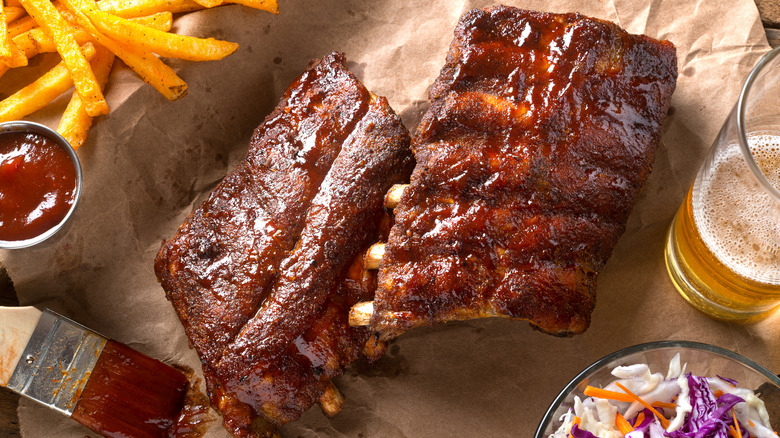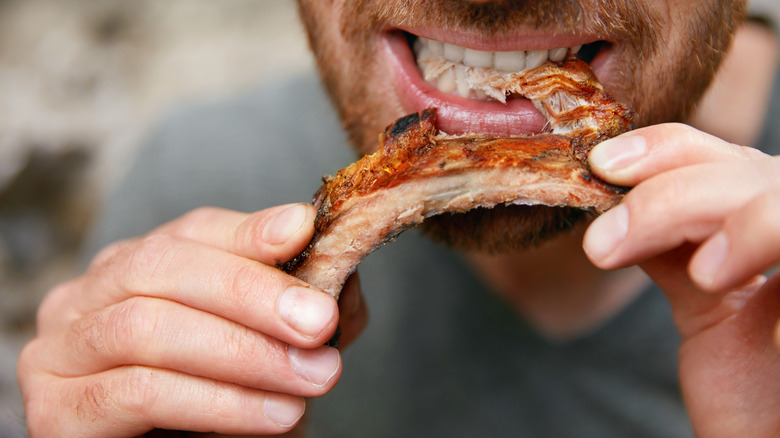The Subtle Difference Between Spare Ribs And Baby Back Ribs
Ribs are a summer barbecue classic and the go-to food when you have a nice new shirt that you want to ruin forever. There are many types of ribs, distinguished by the animals they come from and the ways they are cut, but none dominate menus more than pork ribs, specifically spare and baby back pork ribs. Seasoned pitmasters will have their preference, but for the unfamiliar, the real difference between these two options is rather subtle.
For starters, it is essential to emphasize that baby back ribs do not come from baby pigs. "Spare" and "baby back" actually refer to two different cuts that come from the same bone, according to Texas Monthly, but don't think you can simply swap them out for one another. Baby back ribs and spare ribs are uniquely shaped and have different ratios of fat to muscle, significantly impacting the dining and cooking experience.
Baby backs are smaller, but meatier than spare ribs
The most obvious difference between pork rib cuts is that spare ribs are longer and flatter. According to Bon Appétit, they are cut from the end of the rib that is attached to the sternum. They are positioned adjacent to the fatty, sumptuous pork belly, which is cut away to make bacon, pancetta, and an array of cured meat delights. The meat is packed between the bones, with little meat on the top or bottom and they typically come with a tender rib tip attached to the end (via Texas Monthly). Spare ribs are generally fattier than baby backs, which gives them a richer flavor, although their larger size requires a longer cooking time, per Bon Appétit.
Baby back ribs come from the end of the rib that is attached to the spine, hence the "back" in their name. As Bon Appétit reassures us, the "baby" aspect only refers to the fact that these ribs are shorter than spare ribs. Baby back ribs are also attached to the exceptionally lean and versatile pork loin. When the butcher separates the spare ribs they retain some loin meat, which means baby backs have a generous amount of meat on top of, as well as in between the ribs (via Texas Monthly). However, this meatier cut does come with a higher price tag.

